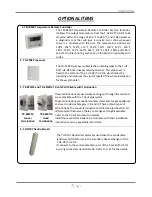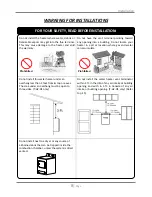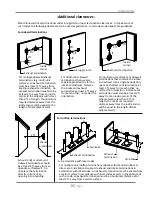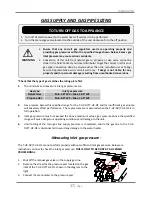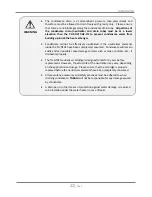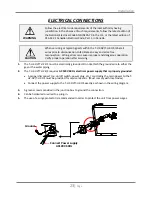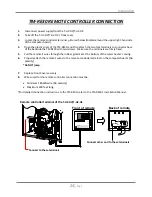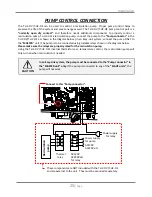
Installation
10
│
Page
Improper
venting
of
this
appliance
can
result
in
excessive
levels
of
carbon
monoxide
which
can
result
in
severe
personal
injury
or
death.
When
installing
the
vent
system,
all
applicable
national
and
local
codes
must
be
followed.
If
you
install
thimbles,
fire
stops
or
other
protective
devices
and
they
penetrate
any
combustible
or
noncombustible
construction,
be
sure
to
follow
all
applicable
national
and
local
codes.
T
‐
H2
‐
DV
INSTALLATION
T
‐
H2
‐
DV
is
equipped
with
a
thermistor
and
hi
‐
limit
switch
for
the
exhaust
gas,
detecting
excess
temperatures
within
the
flue
and
enabling
the
unit
to
safely
stop
operations
if
needed.
These
components
are
always
monitoring
exhaust
gas
conditions
in
order
to
prevent
heat
damage
to
PVC
(Plastic)
venting
if
PVC
is
used.
If
the
exhaust
gas
temperature
exceeds
140°F,
these
components
will
enable
the
unit
to
safely
stop
operations.
(For
the
T
‐
H2
‐
OS
model,
these
components
are
not
available
since
there’s
no
exhaust
venting
required.)
•
T
‐
H2
‐
DV
requires
a
4”
make
‐
up
intake
air
supply
pipe.
The
intake
pipe
must
be
sealed
airtight.
•
Air
supply
pipe
can
be
made
of
ABS,
PVC,
galvanized
steel,
corrugated
stainless
steel,
or
Category
lll
/
IV
stainless
steel.
•
Sidewall
venting
is
recommended
for
the
T
‐
H2
‐
DV.
Vertical
venting
(roof
termination)
is
acceptable.
•
TAKAGI
recommends
running
the
exhaust
vent
and
the
intake
pipe
as
parallel
as
possible.
•
The
TH
‐
PA01
adaptor
is
used
to
make
the
connection
between
the
T
‐
H2
‐
DV
vent
collar
and
PVC
vent
pipe
easier
and
for
maintenance
purposes.
VENTING
INSTRUCTIONS
‐
General
‐
The
T
‐
H2
‐
DV
must
be
vented
in
accordance
with
the
section
“Venting
of
Equipment"
of
the
latest
edition
of
the
Natural
Fuel
Gas
Code:
The
ANSI
Z223.1,
All
applicable
local
building
codes,
Section
7
of
the
CAN/CSA
B149.1
Natural
Gas
in
Canada,
Propane
Installation
Code
in
Canada.
The
use
of
venting
materials
approved
for
Category
III/
IV
appliances
is
recommended
whenever
possible.
However,
T
‐
H2
‐
DV
may
also
be
vented
with
plastic
pipe
materials
such
as
PVC.
For
details,
please
refer
to
the
Exhaust
Vent
(PVC
Vent)
section
on
p.
13.
Vent
installations
in
Canada
which
utilize
plastic
vent
systems
must
use
venting
that
complies
with
ULC
S636.
WARNING
Top
12”
Side
3”
Back
0.5”
Side
3”
Front
4”
(24”
Recommended
for
Maintenance)
Bottom
12”
Keep
the
clearances.







